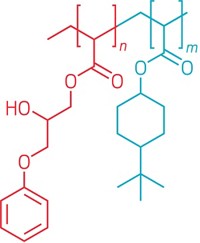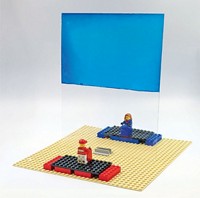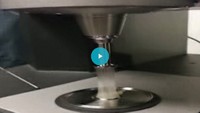Advertisement
Grab your lab coat. Let's get started
Welcome!
Welcome!
Create an account below to get 6 C&EN articles per month, receive newsletters and more - all free.
It seems this is your first time logging in online. Please enter the following information to continue.
As an ACS member you automatically get access to this site. All we need is few more details to create your reading experience.
Not you? Sign in with a different account.
Not you? Sign in with a different account.
ERROR 1
ERROR 1
ERROR 2
ERROR 2
ERROR 2
ERROR 2
ERROR 2
Password and Confirm password must match.
If you have an ACS member number, please enter it here so we can link this account to your membership. (optional)
ERROR 2
ACS values your privacy. By submitting your information, you are gaining access to C&EN and subscribing to our weekly newsletter. We use the information you provide to make your reading experience better, and we will never sell your data to third party members.
Coatings
Multilayer coating could fight bacterial growth on plastic dental devices
Superhydrophilic film made of two sugar molecules could lead to cleaner retainers or tooth aligners
by Prachi Patel, special to C&EN
June 17, 2018
| A version of this story appeared in
Volume 96, Issue 25
A new coating could protect retainers, clear tooth aligners, and other plastic dental appliances from bacterial growth, which can cause bad odors and increase the chances of tooth decay and gum disease (ACS Appl. Mater. Interfaces 2018, DOI: 10.1021/acsami.8b04433). Jinkee Hong of Yonsei University, Hyo-Wan Anh of Kyung Hee University, and colleagues wanted antibacterial films for plastics that would endure the hodgepodge of enzymes and pHs the mouth encounters, while being safe for oral use and made from readily available materials. They electrostatically deposited alternating layers of negatively charged carboxymethylcellulose, a common thickener used in food and pharmaceuticals, and positively charged chitosan, derived from crustacean shells, onto sheets of poly(ethylene terephthalate) (PET), the transparent plastic used to make most dental devices. The resulting coating attracted a smooth, ultrathin water film that stopped bacteria from sticking. After 24 hours of exposure to a common oral bacterium, a coated PET sheet had 75% less bacterial growth than an uncoated sheet. The coating resisted artificial saliva solutions with varying acidity levels and enzymes, and the coated plastic was slightly stronger and more fracture-resistant than uncoated plastic.





Join the conversation
Contact the reporter
Submit a Letter to the Editor for publication
Engage with us on Twitter